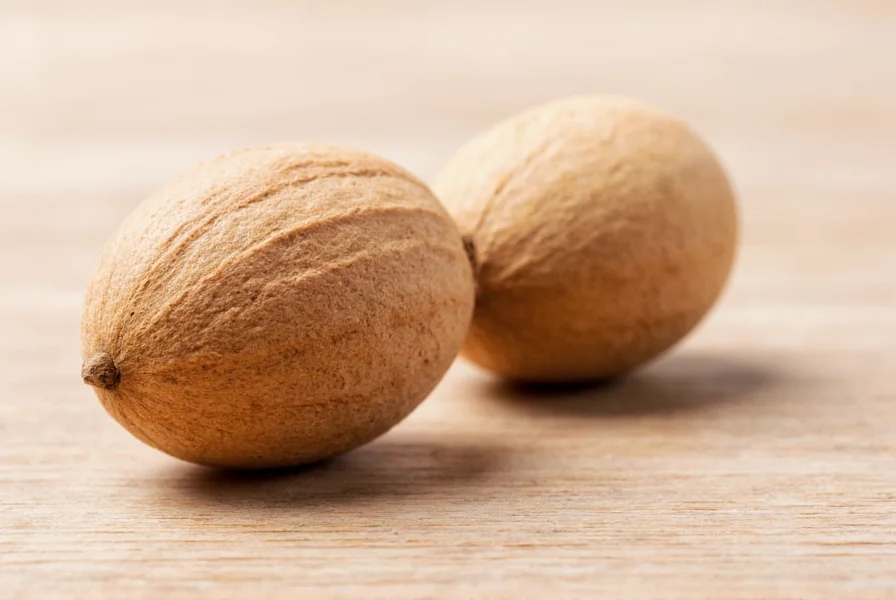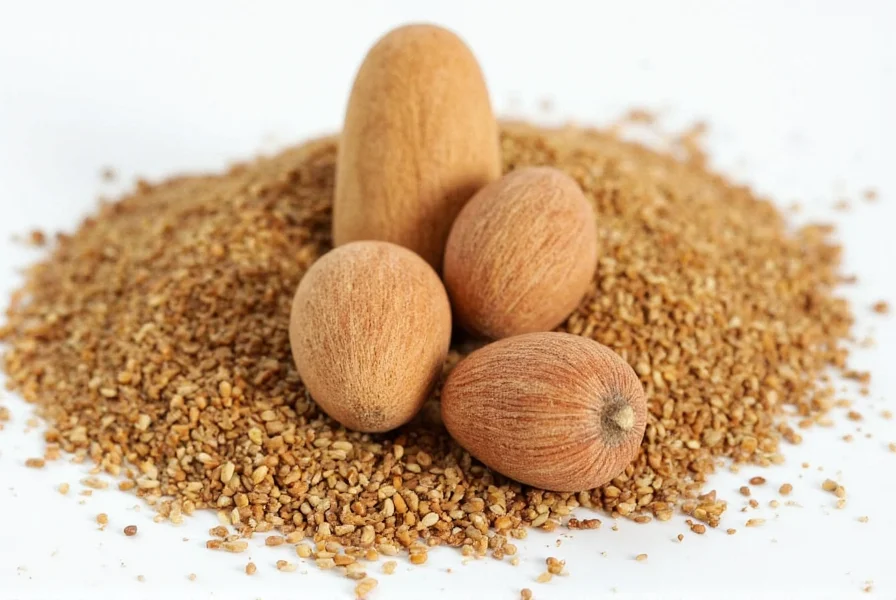Nutmeg's journey from a rare tropical seed to a global kitchen staple begins in Indonesia's remote Banda Islands. This distinctive spice originates from the Myristica fragrans tree, an evergreen species that thrives in the humid, tropical climate of the Maluku archipelago. The Banda Islands, part of Indonesia's Maluku province, represent the exclusive natural habitat where nutmeg trees grew wild before cultivation spread to other regions.
Understanding where does nutmeg come from requires examining both its botanical source and geographical history. Each nutmeg fruit contains a single seed surrounded by a lacy, crimson covering that becomes mace when dried. After harvesting, workers carefully separate the seed from the fruit, then dry it for approximately two weeks until the seed rattles inside its hard shell. This drying process develops nutmeg's characteristic warm, nutty aroma and flavor profile.
| Top Nutmeg Producing Countries | Annual Production (Metric Tons) | Historical Significance |
|---|---|---|
| Indonesia | 10,000 | Original source (Banda Islands) |
| Grenada | 3,000 | "Isle of Spice" since 18th century |
| India | 300 | Secondary cultivation region |
| Sri Lanka | 200 | Historical trade route location |
The Historical Journey of Nutmeg
When exploring what country does nutmeg come from originally, historical records point exclusively to Indonesia's Banda Islands. For centuries, these small volcanic islands represented the world's only source of nutmeg. Arab traders controlled the spice trade from the 6th century onward, deliberately obscuring nutmeg's origin to maintain their monopoly. They spread fantastical stories about nutmeg growing on inaccessible cliffs guarded by poisonous snakes.
European powers later waged wars over control of the Banda Islands due to nutmeg's extraordinary value. In the 17th century, nutmeg commanded prices equivalent to gold in European markets. The Dutch went to extreme measures to protect their monopoly, including executing anyone caught growing nutmeg trees outside their controlled territories. This historical context explains why understanding nutmeg spice native region involves more than just geography—it encompasses centuries of trade wars, colonial expansion, and economic history.

Modern Nutmeg Cultivation
While the Banda Islands remain nutmeg's ancestral home, commercial cultivation has expanded to other tropical regions. Today's primary question isn't just where does nutmeg originate from but where it's grown commercially. The ideal growing conditions require consistent temperatures between 20-30°C (68-86°F), high humidity, and well-drained volcanic soil—conditions found in several equatorial regions.
Grenada now produces about 40% of the world's nutmeg supply, earning its nickname "Isle of Spice." Other significant producers include India, Malaysia, and Sri Lanka. However, Indonesian nutmeg from the original Banda Islands still commands premium prices due to its distinctive flavor profile developed in the tree's native ecosystem. This distinction between historical origin and modern production centers is crucial when researching nutmeg cultivation regions.
The Nutmeg Tree's Botanical Requirements
The Myristica fragrans tree requires specific conditions to thrive, explaining why nutmeg tree natural habitat remains limited. These trees grow up to 20 meters tall and begin producing fruit after 7-9 years. They need partial shade when young but require full sun as they mature. The trees flower year-round, with fruits ripening at different times, necessitating careful hand-harvesting when the fruit splits open naturally.
Each tree produces approximately 2,000-3,000 seeds annually, but yields vary significantly based on soil quality, rainfall patterns, and cultivation practices. This biological context helps explain why nutmeg remains more expensive than many other spices and why its production remains concentrated in specific tropical zones rather than being grown globally.

Cultural Significance and Economic Impact
The story of spice islands nutmeg history extends beyond mere commerce. In Banda Island culture, nutmeg trees were traditionally considered sacred, with specific rituals surrounding planting and harvesting. Local communities developed sophisticated agroforestry systems that integrated nutmeg trees with other crops to maintain soil fertility.
Today, nutmeg remains vital to the economies of producing countries. In Grenada, nutmeg appears on the national flag and drives significant tourism. Indonesia's Maluku province continues traditional harvesting methods while implementing modern quality control standards. Understanding these cultural dimensions provides deeper insight into where is nutmeg grown today beyond simple geographical listings.
How to Identify High-Quality Nutmeg
Knowledge of nutmeg's origin helps consumers identify quality products. Authentic nutmeg from its native regions typically has:
- A rich, warm aroma with notes of pine and citrus
- A deep brown color with visible oil veins
- A firm texture that grates smoothly
- A complex flavor profile that's warm but not bitter
When purchasing nutmeg, look for whole seeds rather than pre-ground powder, as the essential oils that provide nutmeg's distinctive flavor evaporate quickly after grinding. Properly stored whole nutmeg can maintain its potency for 2-3 years, making it worth seeking out products that specify their origin from traditional growing regions.
Where does nutmeg originally come from?
Nutmeg originally comes from the Banda Islands in Indonesia's Maluku province, historically known as the Spice Islands. This remote archipelago represents the exclusive natural habitat where Myristica fragrans trees grew wild before cultivation spread to other tropical regions.
Which country is the largest producer of nutmeg today?
Indonesia remains the world's largest producer of nutmeg, accounting for approximately 70% of global production. However, Grenada produces about 40% of the world's supply and is particularly famous for its high-quality nutmeg, which appears on the country's flag and drives significant tourism.
What tree does nutmeg come from?
Nutmeg comes from the Myristica fragrans tree, a tropical evergreen that grows up to 20 meters tall. This tree produces both nutmeg (from its seed) and mace (from the seed's reddish aril). The tree requires specific growing conditions including consistent temperatures between 20-30°C, high humidity, and well-drained volcanic soil.
Why was nutmeg so valuable historically?
Nutmeg was extremely valuable historically because it grew only in the remote Banda Islands of Indonesia, making supply extremely limited. In medieval Europe, it was prized as a preservative, medicine, and status symbol. During the 17th century, nutmeg commanded prices equivalent to gold, leading European powers to wage wars over control of the Banda Islands.
Can nutmeg trees grow anywhere in the world?
No, nutmeg trees require very specific tropical conditions to grow properly. They need consistent temperatures between 20-30°C (68-86°F), high humidity, and well-drained volcanic soil. This limits commercial cultivation to equatorial regions near the Earth's belt between 20°N and 20°S latitude, including Indonesia, Grenada, India, Malaysia, and Sri Lanka.











 浙公网安备
33010002000092号
浙公网安备
33010002000092号 浙B2-20120091-4
浙B2-20120091-4